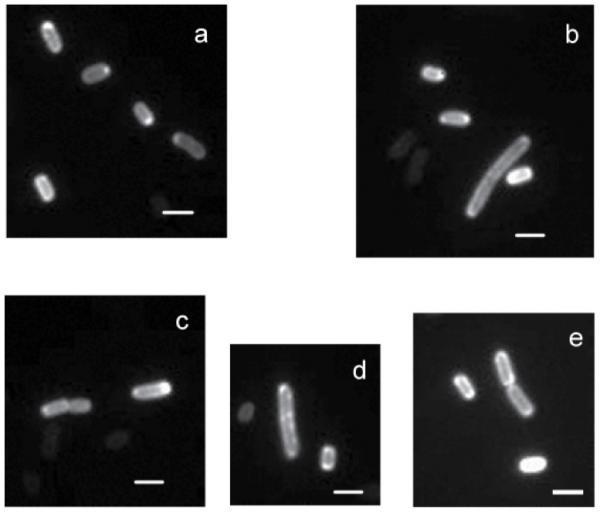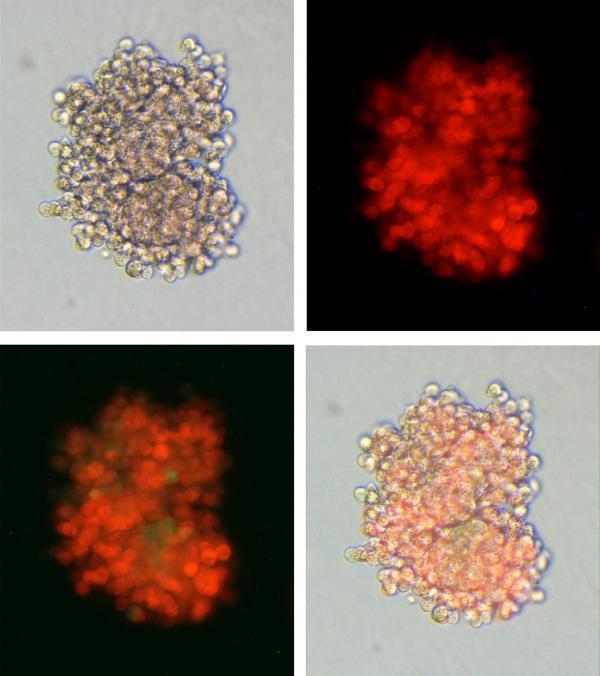
© Natalia E. BroudeThese are fluorescent images of E. coli bacterial cells with visualized RNA.
Scientists who study RNA have faced a formidable roadblock: trying to examine RNA's movements in a living cell when they can't see the RNA. Now, a new technology has given scientists the first look ever at RNA in a live bacteria cell -- a sight that could offer new information about how the molecule moves and works.
Interest in RNA, which plays a key role in manufacturing proteins, has increased in recent years, due in large part to its potential in new drug therapies. RNA localization and movement in bacterial cell are poorly understood. The problem has been finding a way to mark RNA in a living cell so that scientists can track it, says Natasha Broude, a research associate professor at Boston University's Department of Biomedical Engineering.
"You can label any protein within the cell and watch what it is doing," says Broude, a senior researcher on the new study, published in a recent issue of the
Proceedings of the National Academy of Sciences. "For RNA it was much more difficult because RNA is more mobile and less stable than both proteins and DNA."
Before now, scientists used green fluorescent protein (GFP) to label RNA in a cell. But proteins were also tagged with GFP and their fluorescence was so bright, it drowned out the glow from the RNA. "The initial idea was to do something to allow us to decrease background fluorescence," Broude says.

